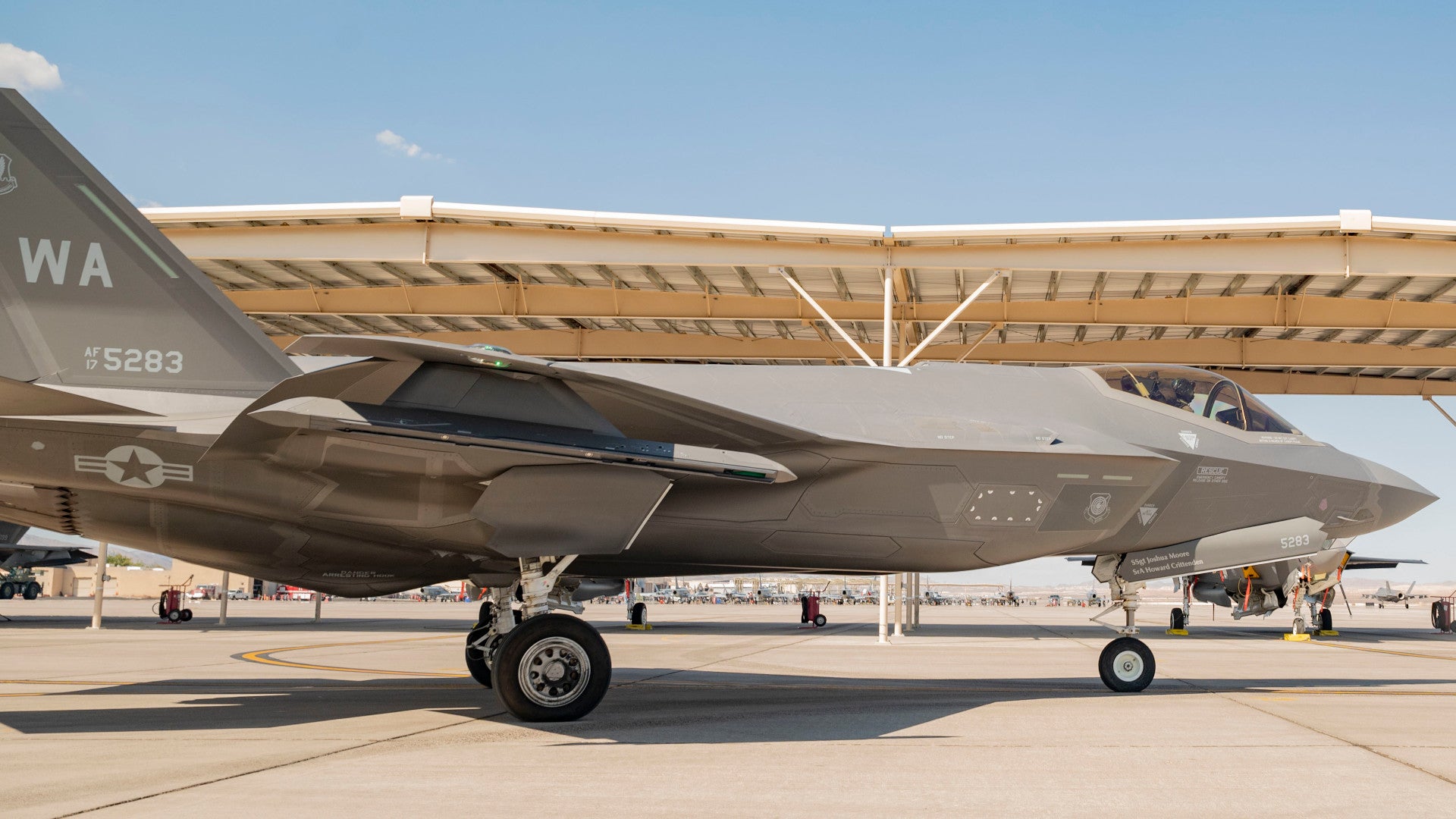U.S. Air Force F-35A stealth fighters have begun operating as red air aggressors during high-end training. The fifth-generation jets are currently making their debut in the latest edition of the Red Flag exercise at Nellis Air Force Base, Nevada, as part of a wider initiative to increase the service’s ability to mimic the kinds of stealthy threats operated by potential foes, primarily China and Russia.
The Air Force has confirmed that, while F-35s have been used to augment dedicated aggressors in previous Red Flag exercises, they had not before been manned by dedicated aggressor pilots. That has changed with Red Flag 21-3, which is being run from July 19 through August 6 and that involves 15 different squadrons and more than 2,200 personnel drawn from across the United States.

“Based on our focus toward great-power competition, we need to make sure that those [blue air] guys are ready, and we do that by presenting the best possible atmosphere we can,” explained Air Force Lieutenant Colonel Chris Finkenstadt, commander of the Nellis-based 64th Aggressor Squadron (AGRS).
“At the end of the day, my job is not to give blue an easy day,” Air Force Colonel Scott Mills, commander of the 57th Operations Group, the parent organization of the 64th AGRS, added. “My job is to give blue the absolute toughest day that I can. And the way for me to do that is to bring the F-35 into the fight. And the F-35 is going to make it exceptionally difficult for blue to achieve their objectives. They’re going to need to take every bit of capability they have, every bit of integration they can, to achieve their intent.”
The Air Force has otherwise not released many details — yet — of the performance of the F-35 aggressors in these latest war games. However, in a press release, the service says that the initial sorties, at least, involved “a lot of red air victories,” although that’s a common feature of aggressor training before key lessons are learned and is not necessarily a reflection of the stealth fighter’s dominance as an aggressor over the Nevada Test and Training Range.
Confirming Air Force plans announced in 2019, The War Zone was among the first to report on the service’s decision to reassign nine low-rate initial production (LRIP) F-35As to Nellis to the reactivated 65th AGRS, which will fly the stealth jets, as well as F-16s, a development you can read all about here. So far, that squadron has not been formally reactivated, so the F-35s involved in Red Flag 21-3 have been flown by 64th AGRS pilots and other staff from the 57th Operations Group.

“The goal for the aggressors has always been where we are essentially matching the aggressiveness of our global competitors,” Air Force Lieutenant Colonel Jan “Kuts” Stahl, the deputy commander of the 57th Operations Group, told The War Zone
last year. “They are fielding technology at a rapid pace, and our goal has always been to match, and if possible exceed, that level of technological advancement. So, the threat that we are preparing the warfighter for locally exceeds anything that they’re ever likely to face in battle.”
Ultimately, the 65th AGRS is likely to be in line for up to a dozen F-35s, which will have their onboard software adapted to make them better able to represent threat aircraft. That also provides a useful way of keeping older F-35s relevant, after the Air Force threatened to try and retire these earlier jets, judging it too expensive to upgrade them to the latest standards.
High-end aggressor aircraft have been in particular demand ever since the Air Force closed down the previous incarnation of the 65th AGRS, flying F-15C/D Eagles out of Nellis, as a budgetary measure, in 2014. The results of this decision, and efforts to mitigate them, are discussed in detail in this primer on the Air Force aggressor program.

Since then, of course, the increasing numbers of F-35s in the inventory mean that the requirement for aggressors has only increased. While this is being met, in part, by a range of contract aggressors, under the Adversary Air program, none of those operators fly stealth jets, which are required to challenge fifth-generation fighter pilots.
While the contractors are increasingly able to provide a credible “mass,” meaning that blue air pilots can train against larger numbers of threat aircraft, they lack cutting-edge capabilities, such as low-observable features. Indeed, as well as the red air F-35s, Red Flag 21-3 also involves F-22s, as part of an altogether more capable aggressor package. Then there are the shadowy missions, also presumed to be some kind of aggressor work, that are being flown by the small fleet of F-117 stealth jets from Tonopah Test Range Airport (TTR) as part of the same exercise.

In the background to all this, of course, is the 2018 National Defense Strategy (NDS), which made clear the need to address near-peer threats, including the kinds of high-end aircraft that are now beginning to be fielded by China and Russia.
The lack of suitable equipment to really challenge pilots at Nellis, and elsewhere, becomes all the more apparent when you consider that, until recently, many of the existing aggressor assets have lacked advanced radar, infrared search-and-track systems, radar warning receivers, and tactical datalinks.

There seems little doubt, the addition of the F-35 to the Air Force’s aggressor fleet will provide a significant impact on the level of training that’s being offered. With that in mind, the F-35 looks set to be a key component of the USAF’s elite ‘red air’ force and we look forward to learning more about how the jet fares in its first formal red air assignment.
Contact the author: thomas@thedrive.com
